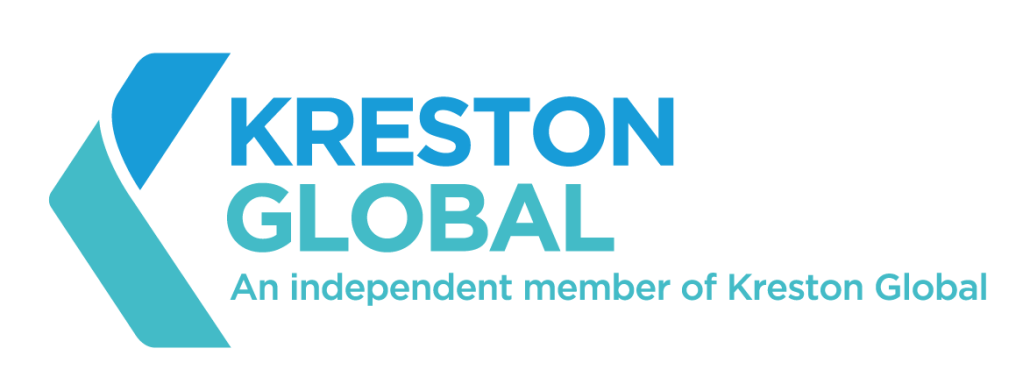As businesses navigate the post-COVID landscape, the dynamics of outsourcing and transfer pricing have taken center stage. With 77% of European countries now favoring intra-continental outsourcing, the focus has shifted toward fortifying the global value chain (GVC) and reducing dependence on traditional outsourcing hubs like China and Russia.
Eastern Europe is emerging as a key player in this evolving scenario. What opportunities lie ahead, and what challenges must businesses address when it comes to transfer pricing in this region?
Biljana Sparavalo, Head of Transfer Pricing at Kreston MDM, shared her expert insights in an exclusive interview with Kreston Global. Her analysis highlights the critical nuances of this transformation, offering valuable perspectives for businesses considering or already engaging in the Eastern European market.
Benefits of European outsourcing: A win-win for accountants and clients
From an accountant’s perspective, outsourcing to Eastern Europe presents an array of advantages. Primarily, it offers cost-effectiveness and enhanced profitability, as labour costs in these regions are notably lower than in Western countries. This enables accountants to access and onboard new team members with specialised skills and knowledge that might be scarce in-house. Flexibility and scalability also contribute to the allure of outsourcing, empowering accountants to navigate varying workloads and adapt to changing demands more efficiently.
For clients of accountants, the benefits are equally compelling. Outsourcing translates into potential cost savings, which can lead to reduced accountancy fees. Clients can still expect high service quality due to the access to skills and modern technologies offered by the outsourcing team. The direct infusion of expertise and diverse perspectives brought by outsourced teams can significantly enhance the client experience. Furthermore, outsourcing can usher in innovative practices and technologies, contributing to improved service delivery.
However, while the advantages are significant, the actual benefits of hiring a European outsourcing partner may vary based on factors such as compliance, data protection, quality control, and cultural and language diversities.
Signs of the shift: Businesses moving towards Eastern Europe
“Before businesses embark on outsourcing in Eastern Europe, they typically explore opportunities in the region”, notes Sparavalo. A noticeable increase in collaborations and partnerships between businesses and European outsourcing companies serves as a tangible sign of this shift. This can be observed through official announcements, press releases, and discussions at industry events.
An additional indicator is the active participation of business representatives in conferences, forums, and industry events hosted in Eastern Europe. This demonstrates a palpable interest in leveraging the local outsourcing options available. Expansion strategies, including the opening of offices or expanding existing ones in Eastern European countries, further underline a commitment to establishing a physical presence that facilitates outsourcing activities.
Strategically, businesses align their service offerings with the strengths and specialisations of outsourcing entities in Eastern Europe. This includes areas such as IT services, software development and customer support. Investment patterns may also shift as businesses allocate funds towards infrastructures that support remote collaboration, showcasing their readiness to work seamlessly with teams spread across regions.
Companies engaged in outsourcing exploration often conduct consultations and market research specifically focused on Eastern Europe. Proactive measures such as adapting business operations to incorporate languages commonly used in the region and an increased emphasis on social responsibility initiatives illustrate a commitment to understanding and navigating the local outsourcing landscape effectively.
Opportunities for Eastern European businesses
For businesses in Eastern Europe, this paradigm shift represents a golden opportunity to actively participate in the global outsourcing market. The region’s strengths lie in its multilingual workforce, shared time zone, cost-effectiveness, and highly educated talent pool. Eastern Europe has become renowned for its expertise in the IT and technology sectors, making it a hotspot for outsourcing contracts in software and web development, as well as IT support.
The potential for European businesses to excel in outsourcing is not just limited to cost-effectiveness but extends to their commitment to delivering high-quality services. To fully capitalise on this opportunity, businesses should strategically develop their expertise to align with changing client needs. A strong focus on marketing and branding to showcase achievements and unique selling points becomes paramount.
Continuous learning and improvement, coupled with staying abreast of industry practices and trends, can make businesses more competitive. Establishing an industry presence through networking is also crucial. Active participation in conferences and engagement with clients and partners contribute significantly to achieving this goal.
Infrastructure also requires attention as businesses must ensure they have the technological and physical resources to deliver high-quality services. Implementing processes that demonstrate a commitment to providing services, flexibility and customisation can further enhance the appeal of the business. Building trust is of utmost importance when handling outsourcing projects involving confidential information. Developing a culture centred around client satisfaction and long-term relationships becomes a strategic approach in this context.
Key transfer pricing regulations in Eastern Europe
“While the rules for transfer pricing in Eastern Europe generally follow the standards set by the OECD, it’s crucial to recognise that specific laws can vary from country to country within the region”, says Sparavalo. A comprehensive understanding of the common aspects and essential regulations is pivotal for businesses navigating the complexities of transfer pricing laws in European countries, she notes.
Documentation requirements:
- Country-by-Country Reporting (CbCR): Multinational enterprises (MNEs) might be required to submit CbCR based on OECD guidelines.
- Local file and Master file: Companies may need to prepare documentation, including a detailed record of transaction-level transfer pricing (local file) and an overview of global business operations (master file).
Arm’s length principle
Transactions between related entities should be analysed at ‘arm’s length,’ meaning that the prices should be consistent with what would be agreed upon between unrelated companies.
Pricing methods
Regulations typically allow for various methods to define the arm’s length price, such as Comparable Uncontrolled Price (CUP), Resale Price Method (RPM), Cost Plus Method, and Transactional Net Margin Method (TNMM).
Advance Pricing Agreements (APAs)
In some countries, businesses may have the opportunity to make Advanced Pricing Agreements (APAs) with tax authorities. APAs enable taxpayers and tax authorities to agree on the methodology for determining transfer pricing, avoiding disputes in the future.
Resolving disputes
Various countries have established mechanisms for resolving transfer pricing disputes, including agreement procedures (MAP) with other nations.
Consequences of non-compliance
Not adhering to transfer pricing regulations can lead to penalties. The severity of consequences depends on the nature of non-compliance.
Documentation thresholds
Certain criteria may exist to determine which entities are obligated to adhere to documentation requirements.
It’s important to note that the development stages of transfer pricing regulations still vary in Eastern European countries, and practices differ. Therefore, conducting individual assessments in each country is advisable.
Common transfer pricing challenges faced by companies in Eastern Europe
Companies operating in Eastern Europe encounter a range of transfer pricing challenges that mirror the intricacies of the business landscape and regulatory characteristics of the region. One major hurdle is the complexity and variability of regulations. Each European country having its own tax laws means that businesses must carefully align their operations with numerous jurisdictional requirements.
In terms of documentation and compliance, companies bear the responsibility of maintaining accurate records to support their transfer pricing strategies. They must navigate through reporting requirements imposed by countries, presenting an added layer of complexity. Accessing comparable data is another significant obstacle, as relevant financial information or transactions for validation purposes can be challenging to find.
Regional economic climates introduce an additional layer of complexity, as market conditions and currency fluctuations impact border transactions and the determination of transfer prices.
To successfully manage these challenges, companies should consider leveraging the expertise of transfer pricing consultants.
Investing in solutions, continuous learning, and proactive risk management tailored to their industry and the unique transfer pricing landscapes in the Eastern European jurisdictions they operate in can also be instrumental.
Adaptation and awareness: Navigating the changing landscape
In conclusion, when dealing with transfer pricing in Eastern Europe, companies need to adopt a flexible mindset and thoroughly understand how local regulations and economic conditions can affect their finances. Keeping up with updates in transfer pricing rules and engaging with tax authorities are imperative steps.
The outsourcing landscape in Eastern Europe presents not just challenges, but substantial opportunities for businesses and accountants alike. Successfully taking part in this evolving trend requires strategic planning, a commitment to learning, and a proactive approach to region-specific transfer pricing challenges.
By embracing these principles, companies can navigate the changing landscape and leverage outsourcing to their advantage.












